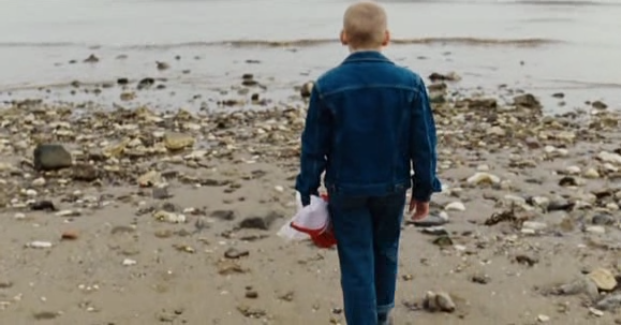This narrative reaches a moment where Todorov's theory of narrative is more difficult to apply as the plot seemingly has two disruptions to the equilibrium. The first being the meeting of Shaun and Woody. The two then bond and Shaun becomes well established in the gang. This then leads to the introduction of Combo and the line he draws on the floor to offer the choice of joining him. The choice Shaun makes is the second disruption. Meadows has emphasised this new disruption by timing the choice that Combo offers to be exactly in the middle of the movie. This essentially gives the movie two narratives as it is split directly in two.
Meadows emphasises the idea of two stories repeating themselves by making some key shots look almost identical. The key differences between the first half and the second is how the second has a darker theme to it as the gang focuses on racial abuse, this is reflected in the style of the shots as they become darker in an almost foreboding way.

Shaun is to the left of both leaders in their gangs. Gadget is also in his same position.
Meadows also uses more subtle indicators to emphasise the idea of a parallel narrative such as similar music being chosen for when Shaun is on his own after violence from the group. The first being when he first encounters Woody's gang and Gadget hits him so he leaves. The second is following Combo's attack on Milky. Both leads to Shaun being on his own at the seaside, in order to emphasise Shaun's 'growing up' the first time he's at the sea he is still a child- eating sweets and playing with his slingshot. The last time he's at the beach he is grown up- the sweets and slingshot are gone as he throws his St George of England flag in the sea.


No comments:
Post a Comment
What do you think?
Note: only a member of this blog may post a comment.